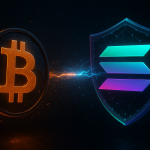Staking is a critical component of the blockchain ecosystem, enabling participants to secure the network and earn rewards for their contributions. In the context of the Cosmos ecosystem, staking plays a pivotal role in maintaining the network’s security and incentivizing validators to act honestly. This article delves into the specifics of staking within the Cosmos ecosystem, focusing on the $RENDER token and the broader implications of staking in this decentralized network.
Understanding Staking in the Cosmos Ecosystem
The Cosmos ecosystem, often referred to as the “Internet of Blockchains,” is a network of independent, scalable, and interoperable blockchains. Each blockchain within this ecosystem is designed to serve specific use cases, built to a technical specification that allows for seamless data exchange between them through the Inter-Blockchain Communication (IBC) protocol. This shared infrastructure, including the consensus mechanism Tendermint and the Cosmos SDK, serves as the backbone of the ecosystem, facilitating the creation of blockchains that can easily integrate with the Cosmos network.

Cosmos Ecosystem Tokens
Cosmos Ecosystem Tokens are the native cryptocurrencies of these application-specific blockchains. They play a dual role in the ecosystem: as the primary means of value transfer and as a means to secure the network through staking. Staking involves locking up these tokens to support the operations of the network, including validating transactions and securing the blockchain. In return, stakers earn rewards, which can vary depending on the specific blockchain and the staker’s level of participation.
Staking Rewards and Risks
Staking rewards are an incentive for participants to secure the network. Early stakers often receive higher rewards to encourage participation. However, staking is not without risks, as validators can be penalized for misbehavior, a process known as slashing. This can result in the loss of staked tokens. It’s crucial for stakers to understand these risks and the specific conditions under which slashing can occur.
Staking with $RENDER
Staking $RENDER would involve locking up the token to support the operations of the blockchain it represents, potentially earning rewards in return. The specifics of staking rewards, risks, and the staking process would depend on the blockchain’s design and governance.
Staking Services and Risks
Services like Anchorage Digital offer staking as a service for various blockchains, including those within the Cosmos ecosystem. These services provide secure custody and access to lending, allowing institutions to participate in staking with minimal risk. However, it’s important to be aware of slashing conditions and penalties, especially when delegating to validators operated by third parties. Understanding these risks is crucial for participants in the staking process.
How does staking work within the Cosmos ecosystem?
Staking within the Cosmos ecosystem is a critical mechanism that not only secures the network but also incentivizes active participation from its users. This process involves locking up digital assets, such as ATOM, the native token of the Cosmos Hub, to support the network’s operations and governance. In return, stakers earn rewards, which can significantly vary depending on the specific blockchain and the staker’s level of participation.
How Staking Works
To begin staking in the Cosmos ecosystem, users typically need to install a wallet extension like Keplr, which provides access to a comprehensive list of validators. Validators are essential entities in the Proof-of-Stake (PoS) consensus mechanism, responsible for validating transactions and securing the network. By staking tokens with a validator, users contribute to the network’s security and stability, earning rewards in the process.
Staking Rewards and Risks
Staking rewards are generated through two primary mechanisms: transaction fees and newly created tokens. Transaction fees collected on the Cosmos Hub are distributed among stakers, incentivizing active engagement with the network. Additionally, the total supply of tokens is inflated to reward stakers, creating new tokens that are distributed to those who have staked their tokens. This process ensures that stakers are incentivized to participate in the network’s security and governance.
However, staking comes with risks, including the possibility of slashing. Validators can be penalized for misbehavior, leading to the loss of staked tokens. It’s crucial for stakers to understand these risks and the specific conditions under which slashing can occur.
trategies for Successful Staking
To maximize staking rewards and minimize risks, it’s advisable to diversify the staking portfolio across different tokens within the Cosmos ecosystem. A balanced allocation, such as ,10OSMO, 10% in 10INJ, can help spread investments and potentially enhance returns. Additionally, selecting validators with low commission fees and a good reputation can optimize returns. It’s also recommended to avoid validators associated with large exchanges, as they may be excluded from future airdrops.
Participation in Governance
Beyond staking, participating in governance by voting on proposals is another way to contribute to the Cosmos ecosystem. This can be done through the Keplr Dashboard, where users can cast their votes on various proposals. Active participation in governance not only secures the network but also allows stakers to influence its future direction.
How does the $RENDER token compare to other tokens in terms of staking opportunities within the Cosmos ecosystem?
RENDER, like other Cosmos Ecosystem Tokens, offers staking opportunities with potential for rewards and airdrops. Stakers should consider diversifying their staking portfolio, selecting validators carefully, and participating in governance to maximize their staking returns and secure the network. Understanding the specifics of staking with $RENDER would require further research into the token’s blockchain and governance policies.


